DIY Extractor: How We Made Ours
While researching this topic I found YouTube videos of people using old washing machine drums, steel burn barrels, plastic drums with bicycle tires for the inner cage and a whole lot of other interesting techniques.
Over the winter my dad set about to make our own 8 frame electric extractor. Our extractor is custom built to our specifications, so I won't provide a lot of dimensional details, rather, just the basics to get you thinking in the general direction.
Our Barrel
We found a source for brand new food grade plastic barrels, and bartered for it. Bartered? Yup! A distributor was willing to trade us a new, empty barrel for a jar of honey.
The Basket
With a barrel in hand, we could measure and devise a way to make an inner basket to hold the frames to be spun. Using scrap stainless steel and a welder, he devised a basket almost identical to those sold in the commercial extractors.
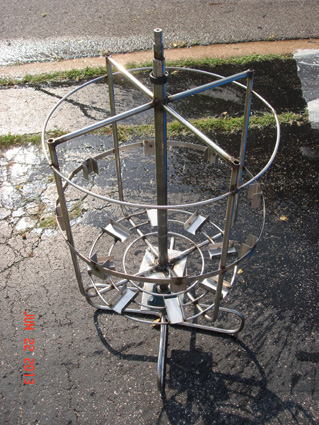
It featured pivoting bearings, legs to keep the basket 4-6 inches off the bottom of the barrel (it can extract up to 10 gallons before needing to drain), and a bracket system to hold the motor and controls.
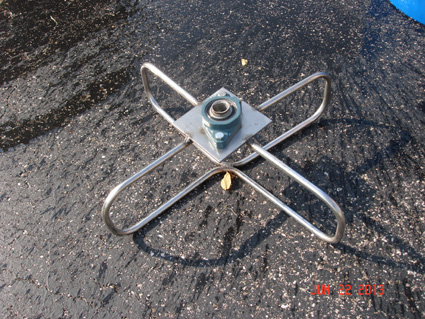
Below is a picture of the bottom of the basket up close. You can see the flanges of stainless steel bent into a shape that holds the frames.
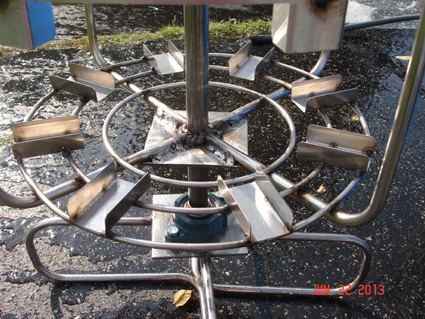
Below is a picture of the side of the extractor basket close up, and shows the flanges of stainless steel bent into shape to hold the frames and keep them inside the basket while they're spinning.
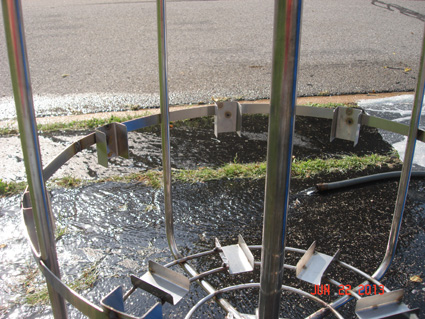
Here is a picture of the top of the extractor basket, from a bird's eye view.
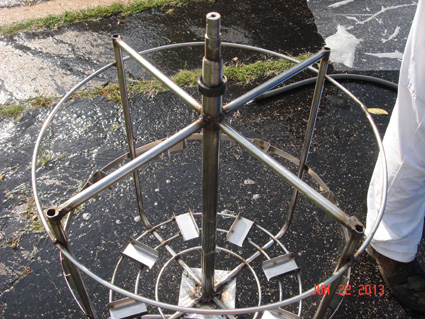
The basket sits on top of the stand, and the whole unit fits down inside the extractor barrel. Once inside the barrel, the motor and coupling is fitting into place and we're ready to go!
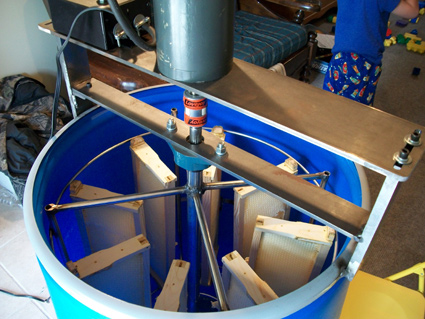
Because the extractor barrel is made from plastic and not steel, it's very light-weight and easy to maneuver and store.
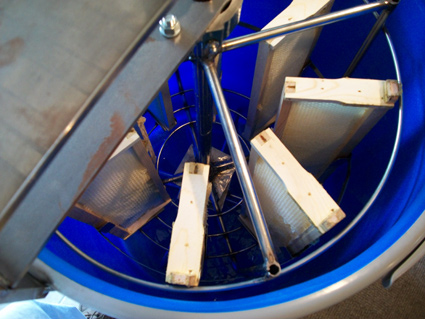
My only real contribution was drilling the hole in the bottom and adding my 1 1/2 inch honey gate. I was nervous as heck drilling a hole in the barrel to add the gate. After all, I was staring at a brand new extractor, and I was inching a hole saw right towards it.
The honey gate went in smoothly, and it was ready for use.
P.S. - I'll post a few more details about the motor and control.
The Motor
The motor and speed control are the same Baldor products that ship with some commercial built extractors. We were able to acquire the items (without cost) because they were being discarded. It could have been for any reason including quality control, but for our purposes, we found nothing wrong with them and they seem to be working great.
Here are the motor specs:
Torque: 350
Max Speed: 2500 rpm
Max Voltage: 100 Vdc
Current Continous: 7 A
Current Peak: 25 A
Voltage Constant: 40 V/Krpm
I've seen others use ceiling fan motors, and those just don't have the torque needed to spin at the slow speeds when the extractor is first started and the majority of honey is spun out of the frames.
We've discovered spinning at a slow to medium speed for 5-10 minutes will remove 80-90% of the honey in the frames. Spinning at a medium to fast or fast speed for the last several minutes will sling the remaining honey out.
If you have other questions, comments or ideas, leave them in the comments below! If you've made your own, drop us a link to your extractor, we'd love to see it!